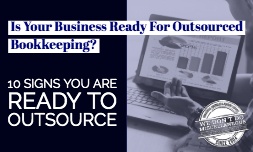Understanding your profit margins is a critical component of healthy financial management. With a product-oriented business, profit margins are often largely focused on tangible goods and materials that are easily quantifiable. However, if you are in a service-based business, understanding profit margins can become a bit trickier. For services, determining profit margins requires looking into more intangible factors and qualitative factors to figure out whether your business is really getting a good ROI or not.
1. Look at the true time and resource cost for the service.
Time tracking software, whether or associated with your project management apps, gives you valuable data to figure out how long your company takes to perform specific services, and the productivity levels of your employees. When you know exactly how much time to allocate for particular services, you have a much easier time costing the project.
2. Consider the experience of the service provider.
Your employees are not created equally. The marketing specialist who has been with your company for 10 years commands a higher rate than the junior editor who came onboard yesterday. Factor in the differences in hourly rates when the service requires the touch of a senior employee compared to a more generalized employee. Your employees might be paid salary and their contributions may fluctuate, but determining an average hourly rate when figuring out this overhead cost will help keep comparisons as close to reality as possible.
3. Factor in direct and indirect costs.
The hourly cost of your employees isn't the other cost to deduct from your profit margin, unless you're only looking for your gross profit margin numbers. Several direct and indirect costs also need factored in. Your overhead costs for the office, such as rent, utilities, technology cost, and office supplies all factor into your profit margins. You also want to look at the indirect costs for employees as well, such as training, health insurance, and other benefits. Look through your expense categories to determine which are applicable to the profit margins of the services you offer.
4. Don't forget your marketing and administrative costs.
Today's business world is a competitive arena that requires plenty of marketing effort to succeed. These costs continue to affect the profit margins on your services, as well as administrative costs such as getting project specs, invoicing, and billing the clients. Every factor that works into the overall cost of the product you offer needs to be considered.
5. Look at your data from different angles.
You may have a good grasp of how much it costs to gain a new client and how much it costs to keep them. But do you know how much revenue each client represents? Some clients may become excellent referrers, bringing you new clients with very little additional expense on your part. These factors need to also be assessed in an ongoing review of the immediate and long term costs of a client as you may find focusing on referral programs and client services significantly improves your service profit margins.















